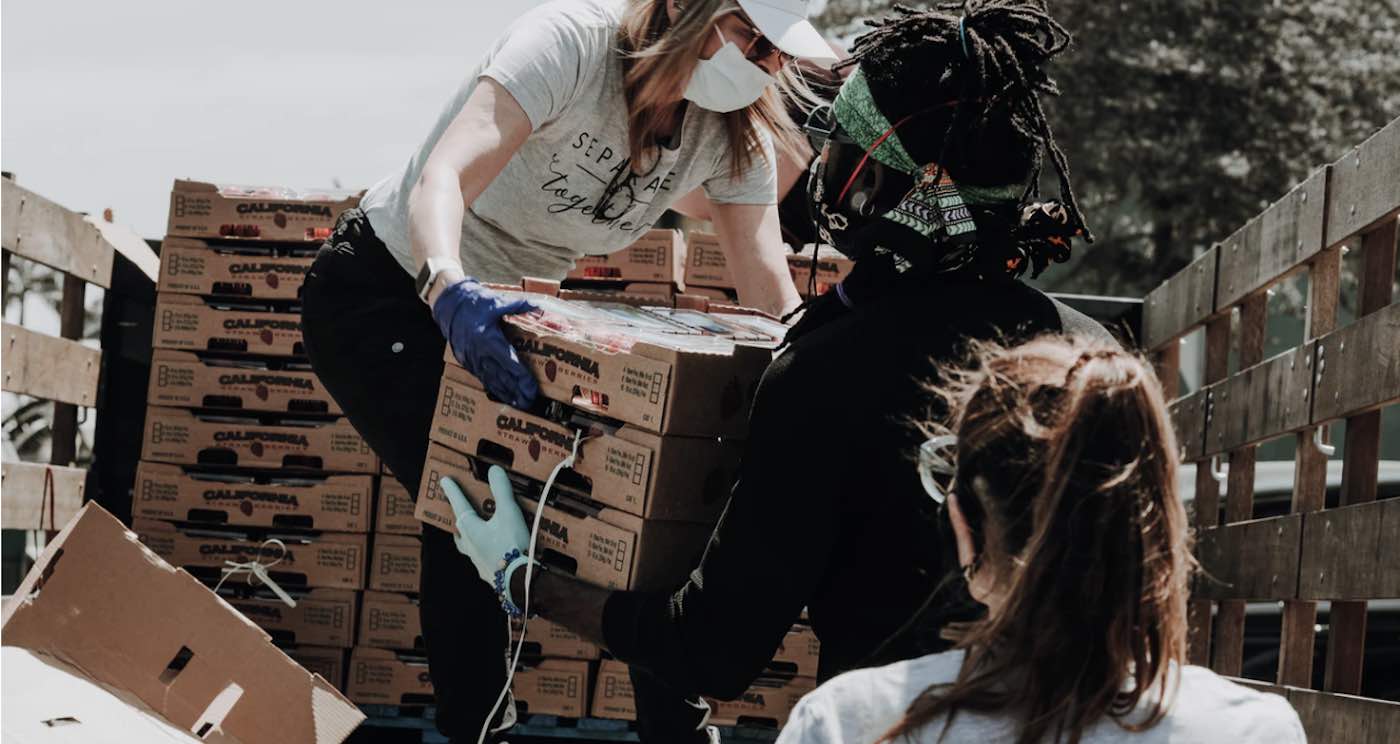Fabric cuttings and textile leftovers are a difficult class of waste to recycle, but in a fashion industry first—a door-to-door New York City recycling service meant exclusively for textile waste is helping the uglier side of fashion get a green makeover.
Fabscrap runs an internet store and a physical location that’s part second-hand shop, part recycling facility based around fashion industry waste collected from top brands like J. Crew, Nautica, and Macy’s.
Jessica Schreiber, the founder of Fabscrap, discovered while working at New York City’s Bureau of Recycling and Sustainability that many of the city’s iconic fashion industry names were ringing her office asking what to do with textile waste.
Being that NYC law requires the recycling of any material if it amounts to more than 10% commercial waste, she realized the problem represented an unfulfilled niche that would make a great business model.
RELATED: These Comfy T-Shirts Made From Wood and Algae Can Be Composted Once You’re Done With It
She pitched her idea to “Project Runway: Fashion Startup” and was awarded seed money for her vision of a company that would pick up textile waste from fashion houses and find ways to reuse or recycle it.
Accumulating 20 clients in her first year, Schreiber now manages the waste of 434 different brands, and her work has seen 600,000 pounds of textiles and fabric spared from entering New York City’s landfill network, with each pound saved representing around 2.06 pounds of CO2.
A volunteer effort
The cutting room floor of a fashion brand’s studios is a messy place, and the bags of waste Fabscrap collects weekly must be sorted by hand. In the past year alone, 2,017 volunteers have helped out at the warehouse.
Separating the textiles by fiber—from cotton to wool and more, the people at Fabscrap will weigh and document each bag. The organization sells the fabric by the pound on their website and out of their retail headquarters in Brooklyn, and ships the unsellable waste to be recycled and turned into stuffing for furniture, or insulation for things like moving blankets.
According to the Environmental Protection Agency, textile and fabric represents 5% of total landfill space, while a life-cycle analysis found that fabrics for all purposes account for 10% of global greenhouse gas emissions— most of which is methane, a GHG that is 28 times more powerful than CO2.
Furthermore, the dyes and other chemicals used to treat clothing can contaminate groundwater sources.
New York City has very progressive recycling laws on the books for fabric and textiles. However, these laws are difficult to track or enforce since private companies haul away trash, and the waste of buildings tends to get mixed together.
MORE: Fashion Designers Replace Plastic-Based Vegan ‘Leather’ With Fabric Made Out of Apple Peels
For fashion brands that value sustainability over other corporate goals, Fabscrap represents the ultimate partner, and Schreiber has made several close connections with brands focused on reducing waste.
Schreiber hopes to expand to other cities and countries, notably Los Angeles, the center of the country’s largest cut-and-sew manufacturing facilities.
“I think opening in LA gives us a really good blueprint for how we might be able to franchise this to other major cities,” Schreiber said in an interview with the Sierra Club.
CHECK OUT: Fashion Industry Eyes Alternative Leather Made Out of Cactus–And it’s Sustainable and Eco-Friendly
That’s an exciting move for the fashion industry, and for the planet.
Don’t Let The Good News Go To Waste: Share This Story On Social Media… (File photo: Joel Muniz)




















